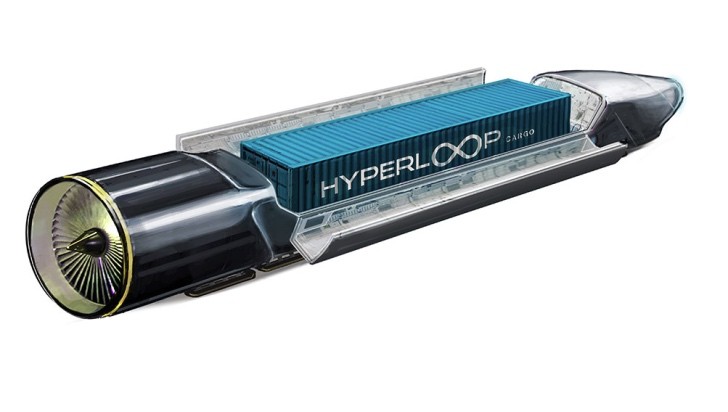Not long ago, Elon Musk came with the Hyperloop idea that will bring back supersonic transport through a pressurized tube. Unfortunately, he is to busy with Tesla Motors and the Space X project to build that, but a new group took the concept and plans to make it real.
The new company, known as Hyperloop Technologies, isn’t your average Kickstarter startup. They have their own landing page and among the team members you can cont on former Space X engieer Brogan BamBrogan, X-Prize founder Peter Diamandis, 2012 Barack Obama re-election campaign manager Jim Messina and VC impresario Shervin Pishevar.
The team managed to raise around $8.5 million (€7.4 million), planning to reach $80 million (€70.2 million) by the end of 2015 and at least start working on a small scale test track to assess the technology.
According to a Forbes report, a possible test track for the real Hyperloop is the space between Las Vegas and Los Angeles, since the two areas are wealthy and have a regular traffic in between. Tests will be done using freight at first, not to endanger people’s lives in case something goes awfully wrong.
Taking out all the air out of the tube to eliminate friction is also a bad idea because the tiniest crack will compromise the whole system. The only way is to leave some air inside, at a pressure much lower than 1 atm (14.7 psi). Still, having this inside the tube will turn the capsule into a piston at a certain speed, which will have to push all the air forward.
And here comes the Hyperloop idea. Put a huge electric compressor at the front of the capsule to draw all the air in front and spew it out the back. This will allow for a very narrow tunnel and tremendous speeds, reaching more than 700 mph (1,126 km/h).
The same compressor will blow a part of the air downwards to create an air cushion, perfect for sliding on at those speeds, while most of the go-forward power will be assured by linear electric motors, similar to what the Japanese Maglev train uses.
The tube should be mounted on pillars to eliminate the need to buy long strips of land from farmers and whatnot, and the engineers have even thought how to compensate for earthquakes and expansion/shrinkage phenomena caused by temperature variations. But you can read more about the whole project in Musk’s original Hyperloop project here.
Sound like supersonic traveling might come back after we were deprived of the Concorde flights. We can only wish the company good luck and hope for the best.
The team managed to raise around $8.5 million (€7.4 million), planning to reach $80 million (€70.2 million) by the end of 2015 and at least start working on a small scale test track to assess the technology.
According to a Forbes report, a possible test track for the real Hyperloop is the space between Las Vegas and Los Angeles, since the two areas are wealthy and have a regular traffic in between. Tests will be done using freight at first, not to endanger people’s lives in case something goes awfully wrong.
How’s tubular transportation going to work?
In case you’re new to the idea (despite having been proposed since the 1800’s) the whole thing relies on a very long tube and capsules traveling inside at very fast speeds. The first ideas were to push the capsules via air, but the longer the tube goes, the more inefficient the method is due to air friction.Taking out all the air out of the tube to eliminate friction is also a bad idea because the tiniest crack will compromise the whole system. The only way is to leave some air inside, at a pressure much lower than 1 atm (14.7 psi). Still, having this inside the tube will turn the capsule into a piston at a certain speed, which will have to push all the air forward.
And here comes the Hyperloop idea. Put a huge electric compressor at the front of the capsule to draw all the air in front and spew it out the back. This will allow for a very narrow tunnel and tremendous speeds, reaching more than 700 mph (1,126 km/h).
The same compressor will blow a part of the air downwards to create an air cushion, perfect for sliding on at those speeds, while most of the go-forward power will be assured by linear electric motors, similar to what the Japanese Maglev train uses.
The tube should be mounted on pillars to eliminate the need to buy long strips of land from farmers and whatnot, and the engineers have even thought how to compensate for earthquakes and expansion/shrinkage phenomena caused by temperature variations. But you can read more about the whole project in Musk’s original Hyperloop project here.
Sound like supersonic traveling might come back after we were deprived of the Concorde flights. We can only wish the company good luck and hope for the best.
